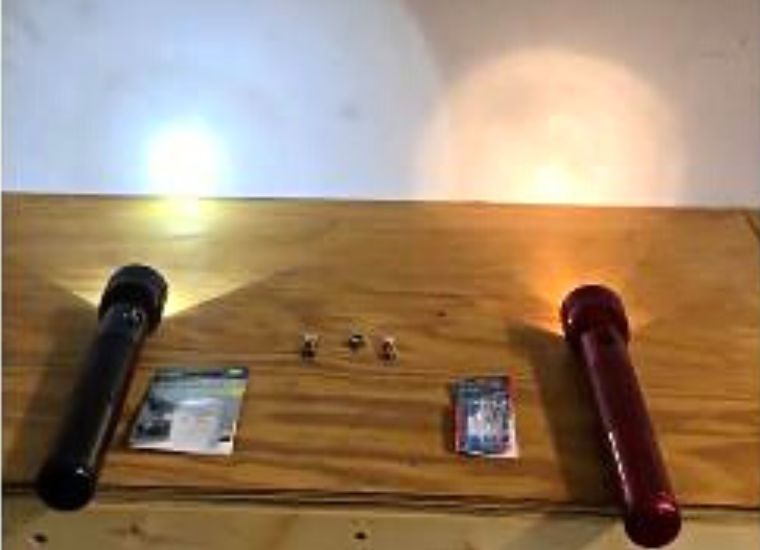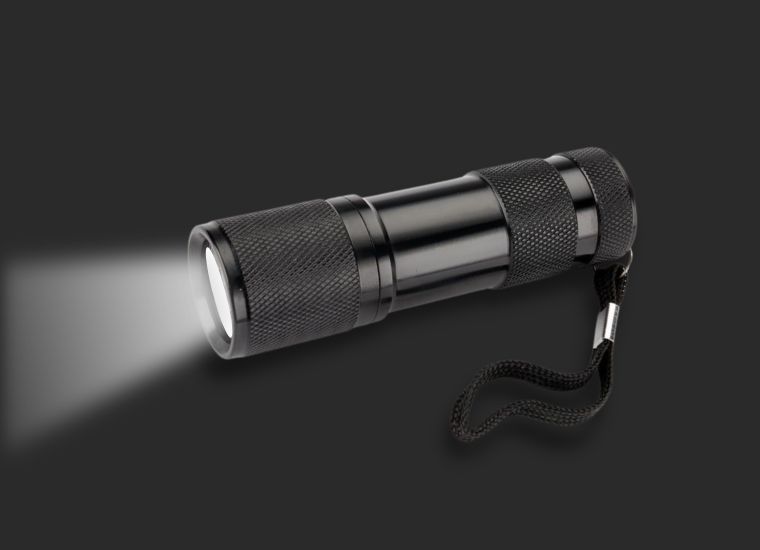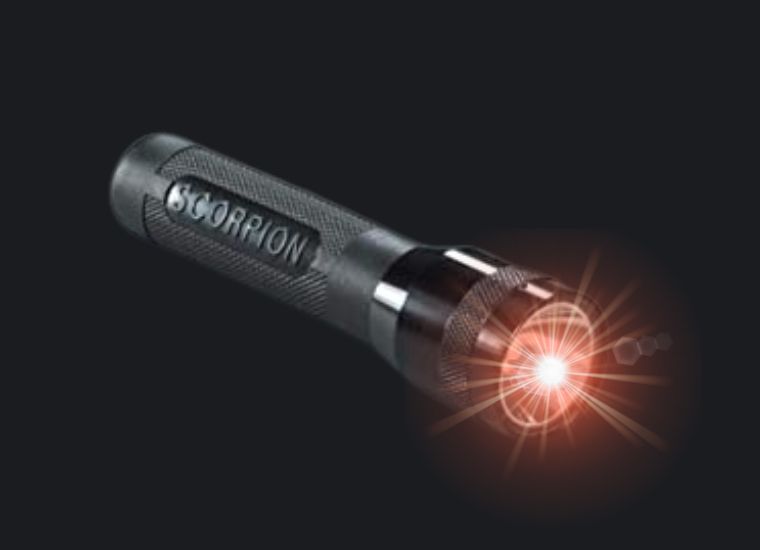The present light technology has greatly advanced over the older incandescent bulb technology. The latest LED and Xenon technologies produce white light utilizing less energy. Today, LED and Xenon bulbs are used in a good number of lighting tools. They are very common in flashlights and car headlamps. Other places where Xenon and LED bulbs are used are in display and decorative lights.
Comparison Table: XENON VS LED Flashlight
| Features | XENON Flashlight | LED Flashlight |
| Life expectancy: | Approximately 20000 hours | At least 100000 hours |
| Environmental Impact: | Contains hazardous materials (mercury) | Environmentally friendly, no hazardous materials |
| Color Temperature: | Warm White | Adjustable (Cool White to Warm White) |
| Brightness: | Moderate | High |
| Filament: | They lack a filament | Small tungsten filament |
| Heat emission: | Rarely produce heat | Produce significant heat |
| Energy efficiency: | More fuel-efficient | Low energy-efficient |
| Durability: | Less durable | More durable |
| Cost: | Expensive to purchase | Are considerably cheaper |
| Battery life: | Reduced battery lifetime | Long-time battery life |
XENON VS LED Flashlight Comparison in 2024
 The best thing about current bulb technologies such as Xenon and LED is that they have lower energy demand and are more durable. As a result, low battery power is used in the long run. Unlike today’s flashlights, traditional flashlights use incandescent bulbs with a tungsten filament. But Xenon and LED use different technologies, as we will find out in this post.
The best thing about current bulb technologies such as Xenon and LED is that they have lower energy demand and are more durable. As a result, low battery power is used in the long run. Unlike today’s flashlights, traditional flashlights use incandescent bulbs with a tungsten filament. But Xenon and LED use different technologies, as we will find out in this post.
LED
LEDs (light-emitting diodes) are solid-state semiconductors that produce light when an electric current passes through them. Similar to Xenon bulbs, LED emissions are highly concentrated in the visible range, with little energy going into heat and other forms of radiation. Normally, the light output from one LED light is a bit low; as a result, flashlight manufacturers usually utilize bulb assemblies that incorporate many diodes.
Furthermore, LEDs perform better than traditional bulbs. They are also brighter, use less energy, and are lighter. So, battery and bulb life is better when compared to that of traditional and other types of bulbs. Another great feature of LED bulbs is that they are solidly constructed and virtually indestructible.
One of the features that sets apart LED lights from the other types of bulbs is that they last longer. Most LEDs have a lifespan of between 50 000 and 100 000 hours. That’s why they are usually used in high-traffic places and tactical areas. They are also waterproof and can resist impact.
XENON
Xenon and incandescent bulbs are almost similar. The difference is that the Xenon bulb has gas that glows inside it instead of a filament. However, the light emission from a xenon bulb is brighter than any other type of bulb, and it uses less energy. Since Xenon flashlights don’t have degradation of a heated filament like incandescent lights, they tend to have a longer lifespan.
Additionally, the light produced by Xenon bulbs is very bright, making it suitable for areas like hospital operating rooms. Most Xenon bulbs have a lifespan of between 6 000 and 20 000 hours. This is better than traditional bulbs but not superior to LED bulbs.
Light features
One of the huge differences between traditional and newer flashlights is the color of their light. Xenon bulbs emit a white light that matches that of daylight better than any other type of light. The human eye is adapted to view this light better, so less light is required for good visibility. On the other hand, LEDs produce a brighter light than traditional bulbs, but they are not perfectly matched to the eyes like Xenon lights.
Weaknesses of LED and Xenon
Despite having outstanding features, Xenon and LED bulbs have their own shortcomings. LED lights emit directional light but don’t form enough light to light a room. That’s why they are assembled together to make them brighter. Xenon lights can explode when they get old. Also, Xenon headlights can make it hard for oncoming drivers to see clearly. Xenon bulbs are also the most costly bulbs on the market.
Final Thought on LED VS XENON Flashlights
The discovery of LED and Xenon lights has created more durable and versatile lighting tools. Of the two, LED bulbs are more durable and reliable. Most of them have a lifespan of 50 000 or more and are virtually indestructible. This is not the case with Xenon bulbs which tend to burst when they get old, as some studies suggest.
Related article: Differences between Fenix and Nitecore flashlights